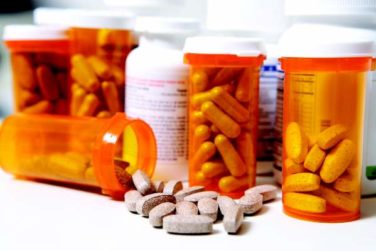AT MEDPAC
WASHINGTON (FRONTLINE MEDICAL NEWS) – Reducing the amount physicians are paid for drugs administered in their offices and introducing shared savings could save Medicare up to $5 billion over 5 years, according to recommendations from the Medicare Payment Advisory Commission.
Those MedPAC recommendations to Congress include cutting physicians’ average sales price add-on percentage, as well as an alternative purchasing initiative called the Drug Value Program that would allow shared savings through more effective pharmaceutical utilization.
“It is our obligation to deal with the escalation of the cost of drugs, including in this case those that are paid through Medicare Part B,” MedPAC Chairman Francis J. Crosson, MD, said during a MedPAC meeting April 6. “We have come up with a recommendation, and it consists necessarily of a set of parts that we believe are balanced in a number of ways.”
Physicians should not be in a position to provide Part B drugs at a financial loss, Dr. Crosson noted. But the current 6% add-on to average sales price (ASP) “overpays many physicians and institutions, and is inherently a cost-ineffecient payment system for the Medicare program,” he added.
Dr. Crosson also noted that current free market principles do not seem to be working effectively to keep drug costs down.
MedPAC’s proposal is designed to strengthen market dynamics for Part B drugs by “creating more equilibrium between the buyer and the seller than currently exists,” Dr. Crosson explained. An alternative reimbursement system will lower overall drug costs for patients while preserving quality and sharing savings with physicians, he said.
If implemented, the proposals could save Medicare between $250 million and $750 million in the first year, and between $1 billion and $5 billion within 5 years. MedPAC staff said.
All present MedPAC members (with one member not present) voted unanimously in favor of moving the two-part recommendation forward to Congress.
The first part, which would start in 2018, would alter the current Part B drug payment process. Currently, doctors receive ASP plus 6%, or wholesale acquisition cost (WAC) plus 6% for drugs without sufficient ASP history.
The proposal would enhance ASP reporting, including requiring more manufacturers to submit data and increasing fines by an unspecified amount for those that fail to meet reporting standards. The WAC add-on percentage would be reduced to 3%.
A to-be-determined inflation index would be applied to ASP and would trigger automatic rebates if ASP climbs faster than inflation. Finally, billing codes for biosimilars and their reference products would be combined.
Under the second part of MedPAC’s recommendation, in 2022 providers would face a choice: continue to have Part B drugs paid for under the ASP scheme with a reduced add-on percentage of 3%, or take part in the Drug Value Program.
Under the Drug Value Program, physicians would sign up with one of several vendors that would be charged with negotiating prices for Part B drugs. Physicians would pay the negotiated prices for the drugs. Vendors would have standard formulary tools, such as prior authorization, tiering, and step-therapy. For a very small subset of drugs with no competition in the marketplace, the proposal includes a binding arbitration process, the specific details to be determined later.
Savings generated from participating in the Drug Value Program would be shared with providers, much like other value programs that provide opportunities for shared savings in exchange for assuming a level of risk.
It was the binding-arbitration process that garnered the most concern from commission members.
“I am absolutely opposed to arbitration,” Amy Bricker, vice president of supply chain strategy at Express Scripts, St. Louis, said. “The message that the commission is sending is that we believe in free markets, but then we don’t. The free market today would allow for many of the things that we are attempting to do with the DVP.”
She called for more detailed discussion on the arbitration process. Her concerns were echoed by other commission members. “I don’t think that arbitration ultimately results in lowering the pricing,” Ms. Bricker added, suggesting it could also open the door to collusion between DVP vendors.
The proposal will be included in MedPAC’s June 2017 report to Congress.






